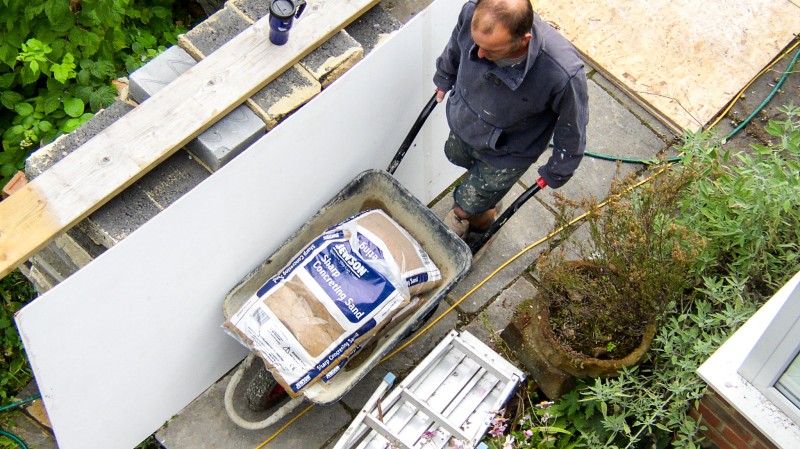You are here: Where to extend?
Side, rear or somewhere else?
With moving costs high and few properties on the market, the trend for staying put and home improvement remains strong. The need for more space is typically the driving force. But where to extend? The key to a successful extension project is getting the design right – both in terms of look and making the most of what you have.

Single-storey rear
The big trend of recent years is a glass box extension which typically involves demolishing the back wall of a house, pushing it outwards and installing a run of bi-fold doors. Often used to expand key areas, such as kitchen-dining-living area, these extensions boost natural light and create a better connection to a garden space. But vast expanses of glass can be a bit bland and boring on grey and rainy days. Plus, it reduces privacy.
However, bespoke builds can provide an attractive alternative to the standard glass box. Think red brick walls, Siberian-Larch clad or oak frame extensions – all brilliant ways to add instant character. A single storey extension means you can introduce vertical light from above through skylights, for example, in addition to feature windows.
Extending at the back of a house will require sacrificing a portion of your garden. This could be a disadvantage if you have children who need outdoor play space or if you only have a small back yard. Many rear extensions can be built under permitted development rights, but larger projects will require planning permission.
Side extension
Side return extensions can transform dark, narrow rooms into light and airy open plan spaces. The side return, a feature in many semi-detached houses, is the narrow passageway that runs alongside a building. By expanding sideways into this alleyway, you can reconfigure the internal layout of your home to create a bigger kitchen, dining and living area. Maximising light is often on the wish list of home owners embarking on an extension. Rooflights will boost natural light in a side return extension as will a window with minimal framing, sliding doors or large-bi-folds.
Unlike a rear addition, side return extensions protect valuable garden space.
In some areas obtaining planning permission for a side extension is more challenging due to restrictions on the width or proximity of neighbouring properties. Additionally, if you’re building a new wall or excavating near an adjoining house, party wall agreement will be required.
Wraparound
A wraparound extension involves extending both to the rear and the side of your home, providing significant additional space and the opportunity for a comprehensive redesign of your property.
When asked to design an extension for a Victorian semi, Gillian Lambert and Geoff Shearcroft, of architecture firm AOC, opted for an extension that wraps around the side and rear of the house. A single storey garage was removed to make way for the new addition. At the front of the house, the new addition features a palette of white bricks and red pre-cast concrete lintels that invert the existing building. Meanwhile the rear of the house, with views to Epping Forest, is clad in woven hazel to invite nature in, say the architects. The playful project make the shortlist for the Don’t Move Improve! 2022 awards, an annual award organised by New London Architecture.
Front
While side and rear extensions are common choices, there are other options worth considering. Front house extensions can be used to enlarge your sitting room, create a new kitchen, bedroom or simply add a porch. But as this addition will be visible on street level it will be subject to more planning scrutiny, especially in a conservation area.
The overall winner of the 2022 Don’t Move, Improve! Awards involved a front extension and full refurbishment of a dated 1960s terraced home in Forest Hill’s Dulwich Estate. Archmongers Architects converted a dated lean-to with a roof lined with corrugated plastic at the front of the terraced home into a bright and open plan kitchen.
Loft conversion
If a full-scale extension is too expensive or seems like too much hassle but you need extra space, you could expand into the roof. In a fresh take on loft conversions, Fraher and Findlay architects were approached by a young couple to design a way to extend a first floor flat at roof level. After looking at the traditional way of forming bedroom spaces at loft level, they come up with an inverse plan: kitchen and dining spaces above with the bedrooms below, connected ty a perforated metal staircase. This means the homeowners can now dine while looking at neighbouring rooftops. Red zinc was used to clad the loft spaces with a sedum roof, to create a biodiverse habitat.
Garage conversion
Garage conversions are one of the speediest and most cost-effective ways to add living space to your home. A single garage will provide about 15m2 of floorspace – more than enough for a home office, extra bedroom or accessible downstairs shower and toilet. Meanwhile a double garage at around 30m2 offers even more options. If your property, has an integrated garage, you could knock through. creating a big, open plan kitchen diner with a new utility area and back hall, for example.
If you simply replace the garage door with a new brick wall and windows, it’s likely to create a dark, narrow room with a low ceiling. “If you have a flat roof on a single-storey garage, it might be worth stripping it and replacing it with a new pitched roof,” said Winchester architect Mark Benzie of C3 Design. “Instead of a pokey room with a low ceiling, you have a vaulted space up to 3.5 metres high, which is allowed under permitted development and you can add roof windows to increase light.”
Basement conversion
If you have a basement or cellar, renovating it into a liveable space is another way to extend your home vertically. Basement conversions offer the advantage of adding significant square footage – sometimes a whole extra floor. Of course, costs are higher for digging out a brand-new basement compared to converting an existing cellar. Houses have collapsed after botched basement extensions, so it's essential to involve a structural engineer and get a schedule of works.
Limited natural light is likely to be an issue, so basements work well as wine cellars, home cinemas, gyms and bedrooms mainly used for sleeping. A good architect,, however, can suggest creative ways to boost the sense of space and natural light and create a connection with outdoors.. In high property value areas, such as central London, basement extensions can offer a great return on investment, but in other areas it might be cheaper to move home.
Outdoor or garden room
If you have a generous garden, constructing an outbuilding or garden room can provide additional living or working space without disturbing the main structure of your home. This option is particularly useful if you need a separate study or studio or guest accommodation.
Choosing where to extend your home requires careful consideration of your needs, the layout and size of your property, planning regulations and budget. Consulting with an architect in the earliest stages of planning will help determine the best option to make the most of your property’s potential and achieve your dream home.
If you are looking to make some home improvements, you may find some of these services useful
Building Regulations
Find details of local experts who can help with Building Regulations
Builders
Find local help with a building project
Architectural Design Services
Find local Architectural Design experts
Structural Inspections
Find an expert to carry out a structural inspection
Building Surveys
I want a local surveyor to do a Building Survey for me
Choose which Architectural service you require
If you are not sure which service you require, check out the options available...


